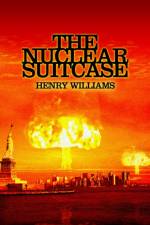- Best Practices for Securing Cloud Environments
av Henry Williams
507
Cloud Security 101: Best Practices for Securing Cloud Environments is a comprehensive guide written by Henry Williams, an expert in the field of cloud security. In this book, Henry provides invaluable insights, practical tips, and up-to-date information to help readers understand and implement effective security measures in cloud environments. With the rapid adoption of cloud computing, organizations are increasingly leveraging the benefits of scalable infrastructure, cost savings, and flexibility. However, this shift to the cloud also brings new challenges and risks, including data breaches, unauthorized access, and compliance issues. This book serves as a trusted resource for individuals and businesses looking to safeguard their cloud-based systems and data. Henry begins by introducing the evolution of cloud computing, setting the foundation for readers to understand the unique security considerations associated with cloud environments. He emphasizes the importance of cloud security, highlighting the potential consequences of inadequate protection and the need for a proactive approach. The book delves into the core topics essential for securing cloud environments. Henry explores various cloud service models, including Software-as-a-Service (SaaS), Platform-as-a-Service (PaaS), and Infrastructure-as-a-Service (IaaS), providing specific security considerations for each model. He also addresses the emerging trend of multi-cloud environments and the associated security challenges. Recognizing the significance of different cloud deployment models, Henry provides detailed insights into securing public, private, and hybrid clouds. He highlights the unique security implications of each model and offers practical recommendations to ensure robust protection. Throughout the book, Henry covers a range of essential security practices and technologies. He addresses secure configuration and hardening of cloud servers, network security best practices, and storage security and encryption. He also explores identity and access management (IAM), data security, application security, and virtualization security in the cloud. As cloud provider selection is crucial for a secure cloud environment, Henry guides readers on evaluating cloud service providers, understanding shared responsibility models, and considering contractual and legal aspects. He also sheds light on cloud provider certifications and audits, helping readers make informed decisions when choosing a reliable cloud service partner. Recognizing the importance of compliance and governance, Henry dedicates a chapter to cloud compliance frameworks, regulations, and the implementation of security controls and assessments. He emphasizes the significance of auditing and monitoring cloud security and highlights the role of governance and risk management. Henry further provides guidance on incident response and cloud forensics, helping readers develop robust incident response plans, detect and investigate cloud security incidents, and utilize cloud-specific forensic techniques. Lastly, Henry explores emerging trends and future directions in cloud security, such as the impact of artificial intelligence (AI), serverless computing, edge computing, quantum computing, and their associated security challenges. By offering insights into these evolving technologies, he helps readers stay ahead of potential risks and adopt proactive security measures.





